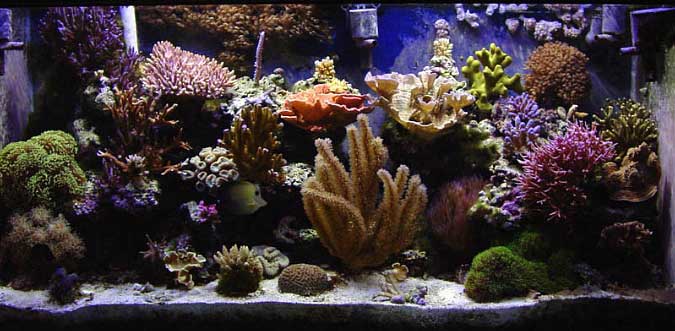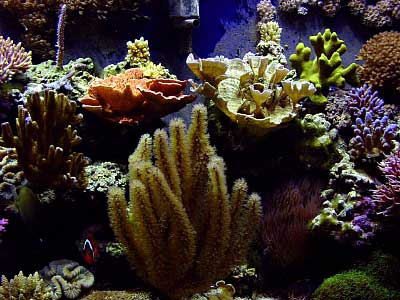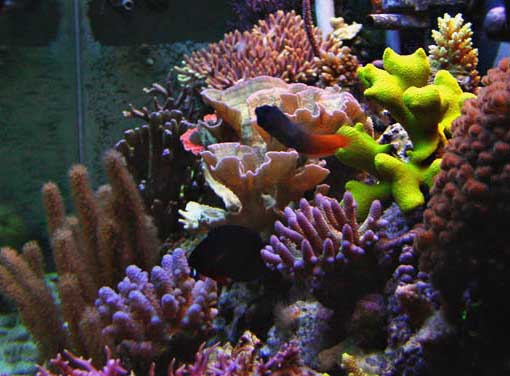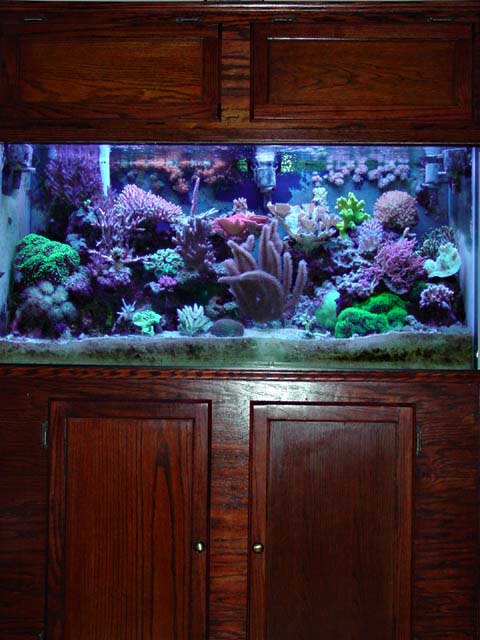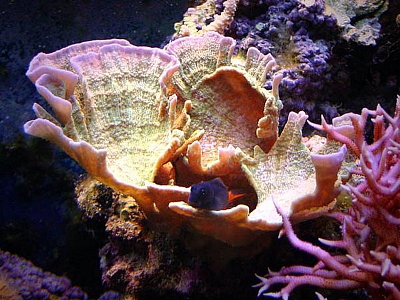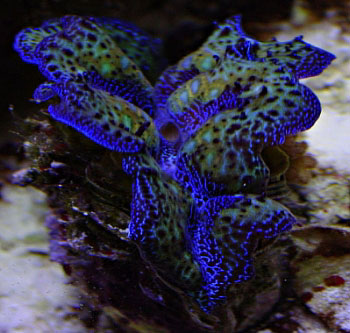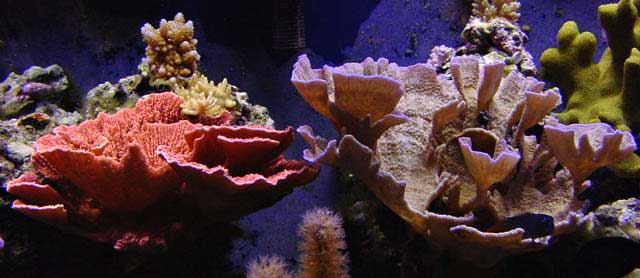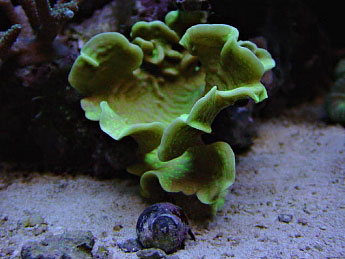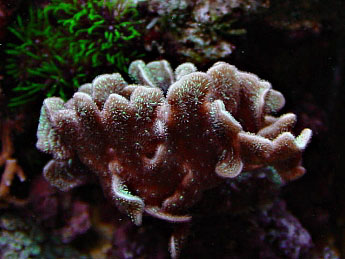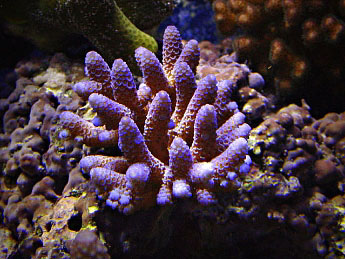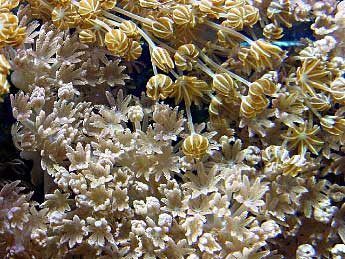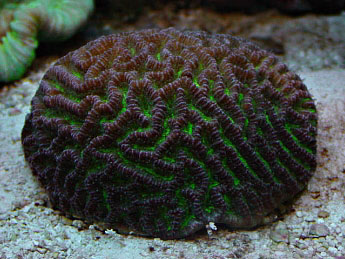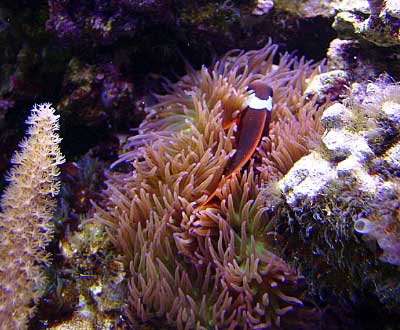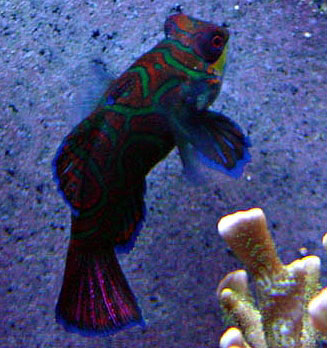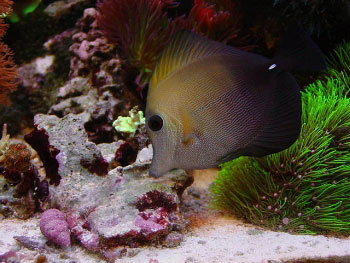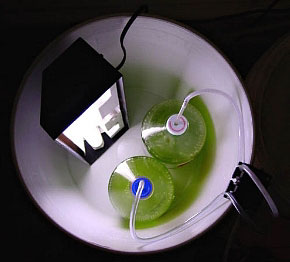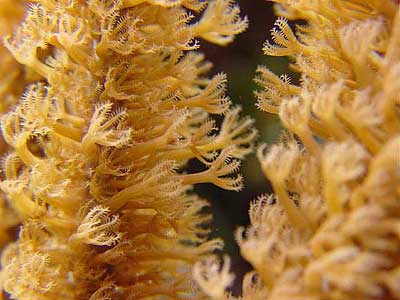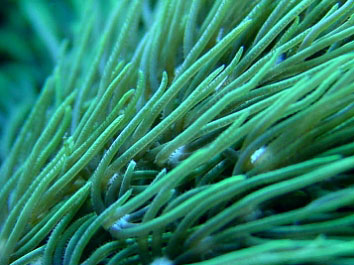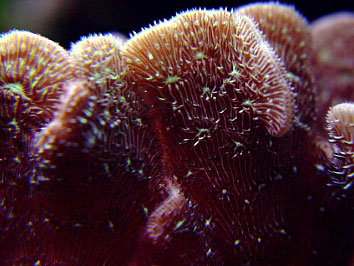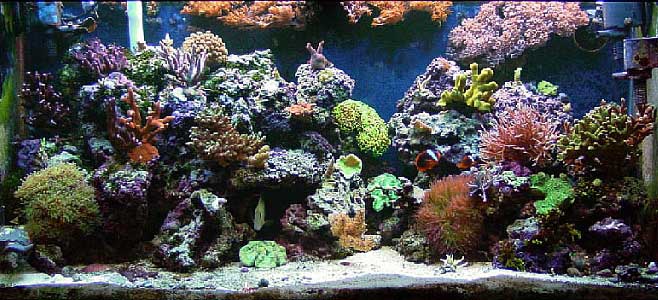Graham Gregorich's (Graham) Reef Aquarium
General Info and Plumbing:
Let me first say that this is an honor.
Reef Central has been this reefer's hands-down most valuable
source of information for the last 3 years. My success and
knowledge in reefkeeping increased immensely since the day
I entered that magic URL. OK, enough sucking-up. Since I'm
the one who has to look at and care for the "same old"
tank every day, it's a pleasure having others acknowledge
the fruits of my labors. Work and school don't leave enough
time for enjoyment. Someday…
I've been keeping fish tanks for two
thirds of my life (let's say about 20 years). My fascination
with marine fish immediately took hold when I started earning
enough money to afford the hobby's essentials (…and
still can't afford the bells and whistles). I have been
keeping reef-type tanks for about five years, and it's no
surprise that it's become a bit more than "just a hobby".
It's given me the incentive to become SCUBA certified, which
has lead to some of the most incredible experiences of my
life. It's also allowed me to explore areas of my scholastics
in a more practical, every-day way.
The tank was set-up in November 2000.
It is a stock 90 gallon All Glass Aquarium (48" x 18"
x 24"). It was drilled in both upper-rear corners,
each to accommodate a 3/4" slip bulkhead fitting. This
is my method of choice for drainage to the sump, as it provides
essentially no in-tank space to be wasted by those pesky
overflows. Together, the two bulkhead drains allow around
600 gallons of sump turnover per hour. I am convinced that
in-tank circulation is far and away more important than
sump-to-tank turnover. As an added bonus, the lower sump
turnover results in quieter overflows. All plumbing is 1"
PVC. The tank has a DIY stand and canopy that I put together
with a couple of friends. I drew the plan up after doing
a bit of research on the web and it's basically a heavy-duty
framed box of 2 x 4's covered with 1/4" oak plywood.
I am very pleased with the result. One nice feature is the
presence of a side door that would allow sump removal should
there be a problem. Without this door, the 30 gallon AGA
tank I use as a sump would not be removable without taking
the whole tank down. I am somewhat impressed that I had
the foresight…though, of course, I'll never need it
now.
The tank substrate is 4-5" deep
and consists of mixed sizes of CaribSea aragonite. It is
approximately 70% sugar-sized, 20% crushed coral, and 10%
larger particles. There is about 90 pounds of Fiji and Vanisi
live rock, all of which was added uncured. Curing was done
in the tank, took about a month, and did not please my fiancée
at all (she digs it now, though). After the rock had cured,
I added a detritivore kit from IPSF including bristleworms,
various mysids, mini brittle stars, spaghetti worms, "peanut"
worms, a couple of species of Strombus snails, Astraea
snails, and scarlet hermits. This represents the bulk of
the sandbed crew, and they have done a bang-up job. This
is the only marine tank I've ever had that hasn't gone through
a cyanobacteria/dinoflagellates phase. Unfortunately, the
uncured rock also brought along a bit of Bryopsis
that has ebbed and flowed throughout the tank's life. Nothing
major, though.
|
Aquarium Profile
|
•
|
90
gallon All Glass Aquarium (48" x 18"
x 24") |
|
•
|
30
gallon All Glass Aquarium (36" x 13"
x 15") sump |
|
•
|
DIY
stand and canopy |
|
The Sump:
The sump, as mentioned earlier, is a
30 gallon AGA (36" x 13" x 15") that is separated
into three partitions. The partitions are quarter inch acrylic
that are sealed to the tank's walls with regular aquarium
silicone sealant. The first partition receives overflow
from the main tank and houses the protein skimmer. It is
also a bit of a settle-out zone. The skimmer is an Aqua
C EV-150 powered by a Mag 12 pump. Previously, I used a
Mag 7, but after some re-start issues, I replaced it with
the 12 which I happened to have laying around. Though I
have to throttle back the 12 a little, the improvement in
skimmate production with the addition of this new pump is
amazing. The second partition is about two feet long and
has a 4" sugar-sized DSB. This portion holds a bit
of live rock that was removed from the main tank, as well
as several species of macroalgae. This partition is lit
by a LOA 65 watt fixture and two 15 watt NO tubes. It is
on a reverse daylight schedule from 8pm-9am. Algae growth
is decent, though I only harvest two or three handfuls every
month or so. It is mainly a haven for various 'pods and
worms - one beauty of a bristleworm, which measures in at
over 15"! It's a crowd-pleaser. This section also has
a 300 watt and 200 watt Ebo-Jager heater that maintains
the temperature between 80-84 degrees on those frigid Minnesota
mornings. The third partition of the sump has a vertically-staggered
array of acrylic to prevent skimmer bubbles from entering
the main tank. This area houses the return pump, a Mag 12.
I keep a high-velocity fan in the sump on at all times to
facilitate cooling and evaporation (and salt spray).
The Canopy:
The canopy is essentially a closed box
that sits on the top of the tank. There is a 4" Icecap
fan blowing in on each side. The only thing I would change
about the design is that I would leave the canopy top completely
open instead of vented. I do have heat issues in the summer,
but nothing a little central air can't take care of…
Lighting is accomplished by two 250-watt
Ushio 10,000K bulbs run on a standard dual PFO ballast supplemented
by three 110 watt URI actinic blue and one 110 watt URI
actinic white. The VHOs are on from 10am-10:30pm and the
halides run from 11:30am-7:30pm. I recently switched to
Ushios after using Iwasakis for two years. I honestly don't
notice that much difference between them, though the Iwasakis
were a bit more "warm" where the Ushios seem to
make the corals "glow" a bit more. I have noticed
significant increase in purple pigmentation of many corals
since the switch two months ago - perhaps only a coincidence.
Regardless, I think I will go back to Iwasakis when the
bulbs need replacing, as the increased cost of Ushios hasn't
proven its worth to me….yet. I also run a 25-watt blue
incandescent bulb for "moonlight." The light is
on a timer and dimmer so I can try to approximate moon cycles.
So far, all it does is look cool.
Water Movement:
The return pump is a Mag12 connected
to a dual-stage calcium reactor (a GEO model, no longer
made I understand) filled with crushed coral, and the tank
return, which is run to the bottom of the tank to a spraybar.
After a few near-tragedies during power-outages, I learned
that one can never have too many anti-siphon holes when
employing a method such as this. In the future, I intend
to replace the substrate-level spraybar with a surface-level
Sea Swirl or similar device, but for now, the PVC glue on
the return pipe keeps me complacent. I cannot over-emphasize
the need to keep the anti-siphon holes free of buildup!
I lost 40 gallons on the floor last year, and if I would
have walked in the door 20 minutes later…let's just
say I wouldn't be tank of the month!
In-tank circulation is accomplished by
the sump return (~600GPH) and four MaxiJet1200s (~270GPH
each) on a Wavemaster Pro. The wavemaker is set on the most
turbulent position giving a maximum in-tank circulation
of around 1800 GPH. Even after 2+ years, I am still experimenting
to find the optimal powerhead placement for the tank. There
are a few slack spots where minor nuisance algae growth
has been a recurring problem (that darn Bryopsis),
but periodic work with a turkey baster has helped the cause.
Basic Parameters/Upkeep:
Water changes are done every 6-8 weeks
with about 30 gallons of Instant Ocean mixed to a specific
gravity of 1.025. I recently made the switch to Crystal
Sea salt after Dr. Shimek's report came out. The funny thing
is, I previously used Crystal Sea all the time. Once I started
talking to more people in the hobby, I joined the herd and
switched to Instant Ocean. I've switched back now and am
eagerly anticipating the results. I recently purchased a
refractometer and was surprised to learn that my cheap five
year old plastic hydrometer was only about .002 low. The
skimmer cup, column, and prefilter are cleaned at least
once per week. The front glass is magnet-cleaned a few times
per week and coralline is only scraped from the sides when
I am going to take pictures. Other maintenance is done as
often as needed (which means it's neglected), but I have
become fairly confident in my ability to evaluate the tank's
needs by the look and behavior of the inhabitants. For instance,
I rarely test calcium as long as my clams have a clean white
ring around the top of their shell. My philosophy is that
growth is the first indicator that I am providing the proper
environment, reproduction is the ultimate goal, and pretty
colors are a bonus!
|
Water
Parameters
|
•
|
Specific Gravity: 1.025 |
|
•
|
Temp: 80 - 84° F |
|
•
|
pH: 7.9 - 8.2 |
|
•
|
Calcium: 420+ ppm |
|
•
|
Alkalinity: ~3.5 meq/L |
|
•
|
NO2,
NO3, PO4:
not detectible using Salifert last time I checked
(about a year ago). |
|
Livestock:
The tank is dominated largely by stony
corals. Stocking has progressed slowly and I have become
quite skilled at restraining myself with the proverbial
reminder that the animals need room to grow. I'm not a big
fan of pruning specimens unless I'm fragging, and tend to
allow the corals to "figure it out themselves"
rather than playing the hand of God. I've had pretty good
luck, and there has only been one relatively minor incidence
of unexplained coral meltdown. Also, I have been intermittently
plagued with the dreaded "red bugs." I can't figure
them out and I seem to have the nastier variety judging
by how the affected corals react, but luckily they ebb and
flow. I am not a big believer in hobbyist accuracy of species
ID and I hesitate to refer to Acropora and even Montipora
by species. The constant shifting and ambiguity of coral
taxonomy further discourages me from learning exactly what
I have, as if anyone knows!
|
Acropora sp. (11 species/morphs)
|
Euphyllia
ancora (5 years old!)
|
|
Montipora sp. (7 species/morphs)
|
Euphyllia
paradivisa
|
|
Pocillopora
damicornis (2 morphs)
|
Pavona
cactus
|
|
Seriatopora
hystrix
|
Pavona
explanulata
|
|
Porites
sp.
|
Platygyra
sp.
|
|
Hydnophora
rigida
|
Trachyphyllia
geoffroyi
|
|
Eunicea
sp. (gorgonian)
|
Tridacna
maxima clam (2)
|
|
Zoanthus sp. (blue morph)
|
Briareum
stechei (green star polyps)
|
|
Centropyge
bispinosus (Coral Beauty)
|
Amphiprion
melanopus (dusky clownfish)
|
|
Zebrasoma scopas (Scopas tang)
|
Ecsenius
bicolor (Bicolor blenny)
|
|
Synchiropus
splendidus (mandarin, she's been in my tank for
18 months)
|
Feeding:
Since I keep a pretty busy schedule,
it's hard to feed the tank the way I'd like to. Normal feeding
time is around 5pm and then another snack around 9pm. The
main ration is a homemade concoction of fresh seafood (shrimp,
squid, oysters, clams, etc…), macroalgae, Mysis
shrimp, golden pearls, supplements, and a few other
odds and ends. It basically follows Eric Borneman's recipe
from Aquarium Corals. I still use some commercial
formulas, a couple types of flake food, seaweeds, and the
occasional live baby brine as well.
About a year ago, I started culturing
my own phytoplankton. Being cramped for space, I wasn't
sure it would work, but I've managed to contain the whole
operation within the confines of an empty salt bucket. Six
months ago I also started keeping a live rotifer culture
as well. I was producing more phyto than I was feeding the
tank, so the rotifers were a welcome addition. All I needed
was to clean my 2.5 gallon tank and dig up an air pump.
Only a year ago, I had no idea that beginning to build a
food chain could be so easy! I have noticed a considerable
increase in the populations of many types of filter feeders
and "preferable" hitchhikers. I've also kept a
mandarin fat and happy for 18 months. One of the short-term
goals I have in the hobby is to be able to feed my reef
tank(s) with only live food (but don't tell my lady…)
Photography:
As usual, one hobby generally leads to
another (for me anyway). After this tank was up and running,
I had to get a digital camera. Well, wouldn't you
know Santa came knocking in the form of a Sony Cybershot
DSC-S75. It's been a lot of trial and error, but over the
past couple years I've managed to become somewhat proficient
at getting decent shots. I've found that a tripod is possibly
the best photo-related investment I've made, along with
a set of macro lenses. Now the problem is the need for more
real estate (to photograph, of course). Some pros may find
this old hat, but I've found that manually setting the aperture
and F-values dramatically increases the color and focus
quality. Taking pictures under lower Kelvin halides can
really confuse the automatic camera and result in drab colors.
I used to be pretty lazy and let the camera do all the work,
but with these digital beasts, the sky is pretty much the
limit - it's all at your fingertips.
The Future:
I will be moving this summer, so the
fate of the tank is uncertain, to say the least. I drift
between wanting to pack it up and take it with me or taking
a little time out and starting over. I've absorbed a lot
of information since the tank went up, and it seems like
a good time to plan a tank "sequel" (and ditch
those darn "red bugs"). However, my schedule for
the next year looks to be quite hectic with work and full-time
school (Clinical Lab Science). Also, and you heard it here
first, I am going to be a new papa!!! At least I won't have
time to be bored…
Thanks for everything RC,
Graham
Feel free to comment
or ask questions about my tank in the forum
for the online magazine.
|



